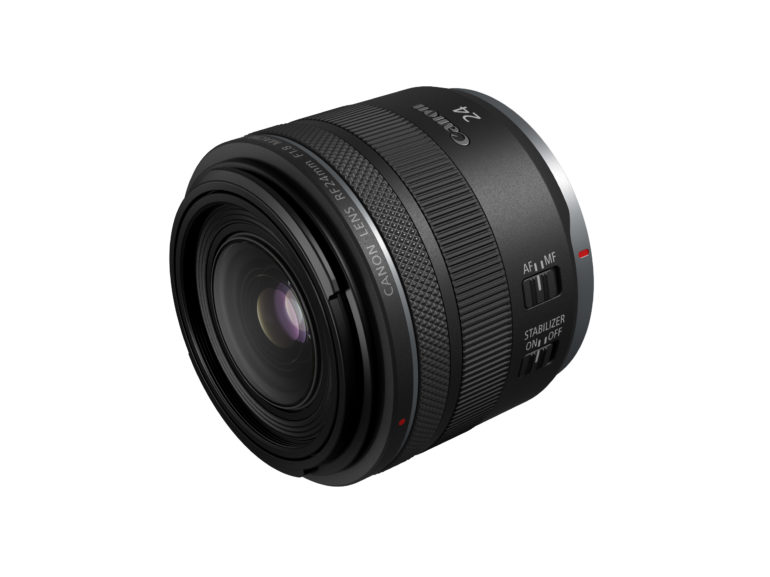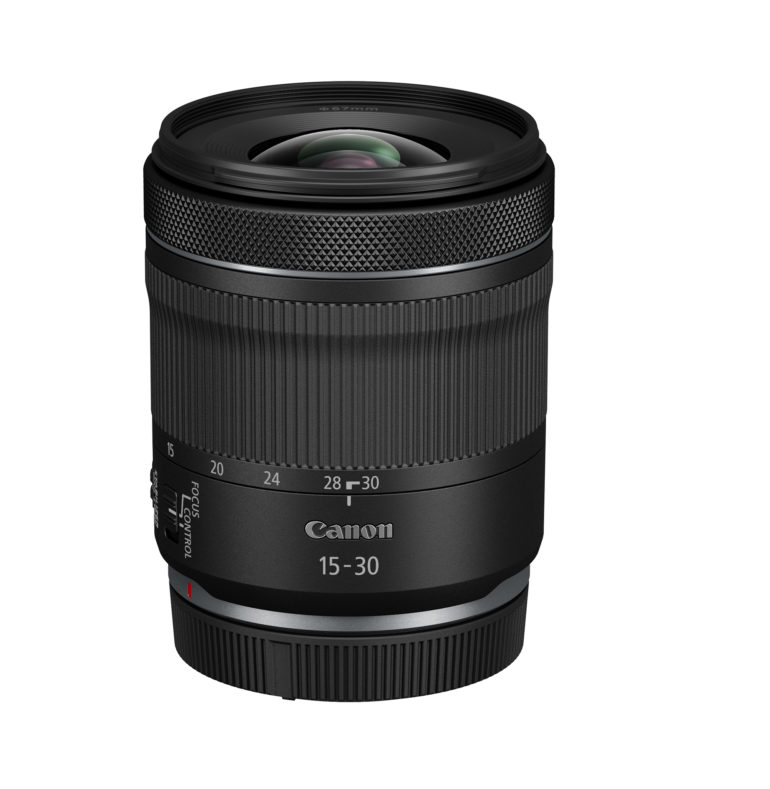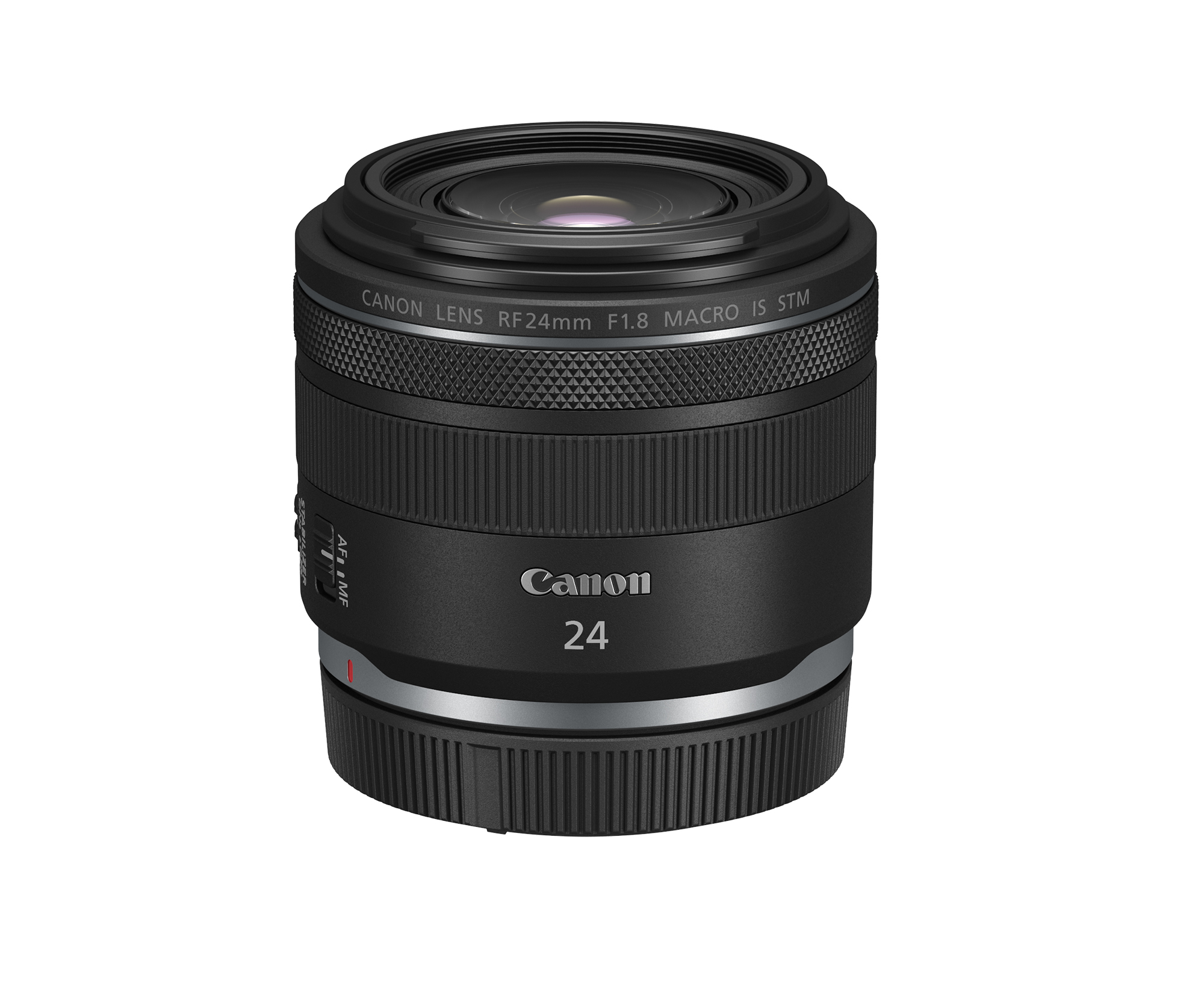Canon is slowly parading out more affordable RF lenses. The Canon RF 24mm f1.8 Macro IS STM and RF 15-30mm f4.5-6.3 IS STM joined the company’s mirrorless options today, both offering stabilized wide views for under $600. While more affordable Canon lenses are needed with the introduction of the entry-level R10 and R7, the lower price point means a few features are lacking, including weather-sealing.
Let’s take a look at what each lens offers and how they fit into Canon’s lens line-up.
Canon RF 24mm f1.8 Macro

The Canon RF 24mm f1.8 Macro is a wide-angle prime lens that also doubles as a macro lens. Key features include:
- A 1:2 macro reproduction ratio
- 5 stops of image stabilization, or 7 with cameras with IBIS
- STM autofocus motor
- Construction with 11 elements in nine groups including one UD Lens and one Aspherical lens with Super Spectra Coating
- Weighs 9.5 ounces
Priced at $599, the Canon RF 24mm f1.8 Macro isn’t Canon’s most affordable prime. The 35mm f1.8 Macro is more affordable. Then there’s also the 85mm f2. Also consider the with the 50mm f1.8 and 16mm f2.8, which do not offer macro focusing capabilities.
The focal length, however, was missing from the RF line-up. The 24mm is a popular focal length, but previously it was only available in zoom lenses. This new prime brings a brighter aperture to that middle-ground wide angle. It’s not quite as distorted as 16mm, but not as close as 35mm.
Canon needs some more budget-friendly lenses to align with the new R7 and R10 bodies. But, what the RF series needs, even more, are weather-sealed lenses that don’t cost $2,000. Canon’s L glass is stunning and durable but out-of-reach for many non-professionals. And who needs weather-sealing more than the newbie that has no idea how to clean a camera sensor or how disastrous a beach on a windy day can be? Yes, there should be super affordable lenses and high-end L glass. But why can’t there be a happy medium as well?
“Who needs weather-sealing more than the newbie that has no idea how to clean a camera sensor or how disastrous a beach on a windy day can be?”
The lack of weather sealing is even more disappointing considering Canon’s other RF Macros — the 35mm and 85mm — aren’t weather sealed either. Shooting in or just after the rain adds a lot of interest to macro photography. The Macro designation isn’t the 1:1 ratio, but reproduces small objects at about half life-size. The 24mm is already pricier than the other macro primes; weather-sealing could have helped to justify that higher cost.
Canon RF 15-30mm f4.5-6.3 IS STM

The new Canon RF 15-30mm f4.5-6.3 is now the RF series’ most affordable ultra-wide zoom, excluding the prime 16mm. It’s half the price of the RF 14-35mm f4 L, which is going to draw a lot of photographers using Canon’s more affordable bodies. In fact, the 24-48mm full-frame equivalent on the R7 and R10 may even make it a good alternative to the oddly shaped, plasticky kit lens. Key features include:
- 5.0 stops of optical stabilization
- Constructed with two Ultra-Low Dispersion elements, one aspheric element, and Super Spectra Coating
- The minimum focus distance of 11 inches, or 5.1 inches in manual focus at 15mm.
- STM autofocus motor
- Weighs 13.6 ounces
The $549 price is going to draw landscape and travel photographers on a limited budget. It’s stabilized. While it’s not technically a macro lens, it can focus pretty close if you use manual focus.
But, the lens also doesn’t have the weather-sealing of the L series. Photographers with Canon’s more affordable weather-sealed bodies, like the R10, aren’t going to spend $2,000 on a weather-sealed lens. That weather-sealing on those bodies is most likely going to waste.

While not L glass, the 15-30mm f4.5-6.3 offers more controls than the 24mm. The lens can switch to manual focus without going into the camera menu. A switch on the lens barrel also changes the focus ring to a customizable control ring and back again. That’s packed onto a compact 3.5-inch lens that weighs less than a pound.
Both of Canon’s new lenses fill a gap in the line for affordable wide-angles, one a macro and one an ultra-wide zoom. While they will be appreciated by many photographers on a budget, I think that Canon needs a middle-of-the-road option for photographers who still like to play in the rain and keep dust off the sensor.


